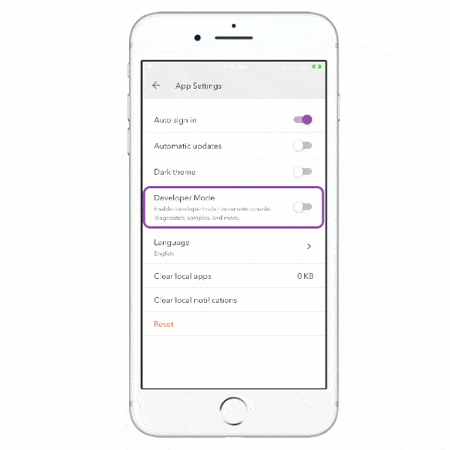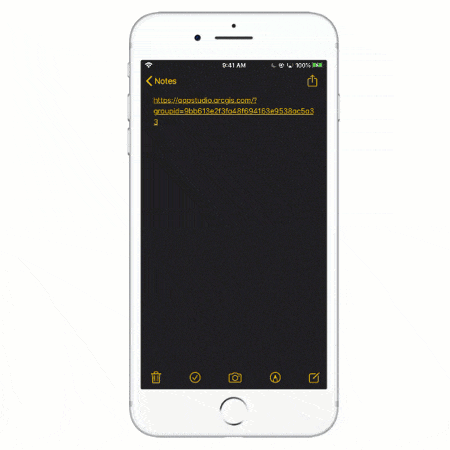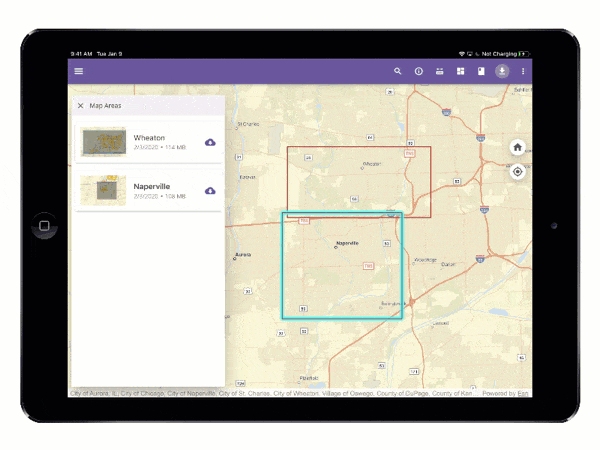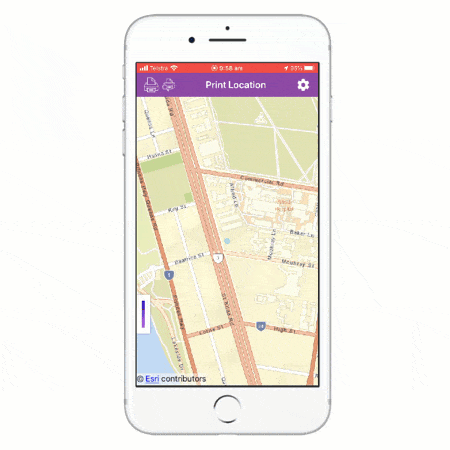We are excited to announce the release of AppStudio for ArcGIS Version 4.2. This release rolls out many new features and enhancements that help you and your team create and distribute rich cross-platform native app experiences. Let’s dive into highlights of the release.
- New user experience and Developer Mode in AppStudio Player
- Support for Custom Profiles in AppStudio Player (Beta)
- Upgraded ArcGIS Runtime 100.7
- Offline Map Areas in the Map Viewer Template
- New Samples: Print Location, Find Features Utility Network, and Create, Edit and Save KML
Get AppStudio 4.2 today by visiting the AppStudio Resources page to download AppStudio Desktop. In addition, you can always download the latest version of AppStudio Player from the Apple App Store and Google Play Store.
AppStudio Player – New User Experience and Developer Mode
The AppStudio Player app is a unique tool that really sets AppStudio apart from other app development solutions. AppStudio Player runs on mobile (iOS/Android) and desktop (Win/Mac/Linux) platforms and lets you run your app projects on a real device without the need to do a separate build and install of the app. AppStudio Player is valuable as both a development tool when testing apps on multiple devices; and as an app deployment option when you want to deliver custom apps to members of your organization. Based on these two use cases, we have made changes in AppStudio Player to provide a better user experience for the target audience (app user or developer/tester).
Based on user feedback, we have streamlined the default user interface of AppStudio Player to present a cleaner and more focused experience to users that just want to download and run apps. We still provide all the tools needed for those doing app development, these are included in a new Developer Mode setting. When Developer Mode is turned on the user will have access to all testing and debugging tools such as the Remote Console tool, Diagnostics Page, and Samples Page. You can enable Developer Mode in the Settings page of AppStudio Player.

AppStudio Player – Support for Custom Profiles (Beta)
Want to quickly and easily customize AppStudio Player without writing any code? Well we have a great news for you. You can now create a custom profile for AppStudio Player by configuring a group in your ArcGIS organization; then deliver the custom profile experience to others with a simple http URL link. The custom profile will show the end user only the apps that are shared within the group, these can be both AppStudio native apps and web apps created in your ArcGIS org.

Custom profiles let you control the appearance of the Player such as branding color, app header title, and feedback email address by adding certain tags in the group. Custom profiles provide a new way to re-brand Player and distribute a curated set of apps, and we can’t wait to see how our users adopt this new deployment option. We would like to receive feedback or suggestions to better support your needs. Please reach out to us at appstudiofeedback@esri.com.
Upgraded ArcGIS Runtime from Version 100.6 to 100.7
AppStudio 4.2 now fully supports ArcGIS Runtime version 100.7. This means you can use AppStudio to create native mapping applications including many cool new functionalities from the ArcGIS Runtime 100.7 update, such as network trace, support for subtype feature layers, new raster types as offline elevation sources, and so much more. AppStudio Player also supports running apps built with ArcGIS Runtime 100.7.
Offline Map Areas in the Map Viewer Template
With AppStudio 4.2, we have extended your ability to take maps offline by supporting preplanned map areas, in addition to Mobile Map Packages (MMPKs). Map areas allow you to package data from specific areas of a web map to make it easier and faster to download maps for offline use. You can use ArcGIS online to easily create offline map areas and then download the map areas in the Map Viewer app to view features when you are disconnected from the internet.

New Sample Apps
In this release, we have added a few new samples – the Print Location sample app will show you how to connect to and configure Bluetooth printers; the Find Features Utility Network sample app demonstrates how to find all features connected to a set of starting points in a utility network; the Create, Edit and Save KML sample app shows you how to construct a KML document and save it as a KMZ file. We have also updated the Portal User Info sample app to display your ArcGIS Runtime license level, and the GNSS Discover sample app with the new feature to demonstrate how to load, parse, and playback NMEA files on the Debug page. You can access AppStudio samples from the Desktop > New App > Sample tab or the AppStudio Player Samples page.

Others Updates:
- The AppFramework now supports loading and parsing NMEA files.
- iOS apps currently support Launch Screen storyboards.
- Split-screen functionality is now enabled for apps running on iPads.
- App Transport Security is now enabled by default on iOS and macOS apps.
- Improved barcode scanning performance.
- Apps running inside Player can now access login information from Player, such as token, username, and passwords.
- Quick Report now supports feature layers with restricted editing.
- Quick Report’s Gallery and Draft pages now honor the app’s font size.
We believe the features added to this release will make AppStudio a more flexible, productive and enjoyable app development platform. And, as always, we are committed to helping you improve the native app developing, testing, and distributing experience. We encourage you to send us your feature requests, feedback, and suggestions. appstudiofeedback@esri.com
For more information about specific bug fixes and additional details about this release, please see the what’s new in AppStudio online documentation and the AppStudio GeoNet community.
Follow us on Twitter @AppStudioArcGIS to keep up-to-date on the latest information and let us know about your creations built using AppStudio to be featured in the AppStudio Showcase.
The AppStudio team periodically hosts workshops and webinars; please click on this link to leave your email if you are interested in information regarding AppStudio events.


Article Discussion: